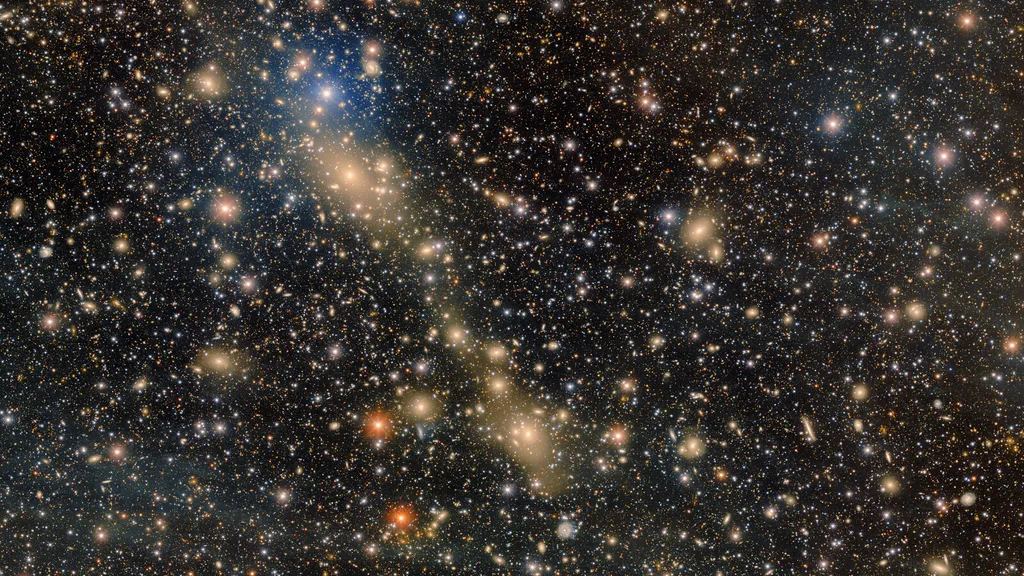Astronomers Discover Million-Light-Year Star Bridge Linking Galaxies in Rare Local Cosmic Merger

Astronomers have made a remarkable discovery in the galaxy cluster Abell 3667, located approximately 700 million light-years from Earth, revealing an unprecedented view of two massive galaxies locked in a gravitational struggle. For the first time in a nearby galaxy cluster, scientists have directly observed a million-light-year-long bridge of stars being pulled from one galaxy into another.
The finding, detailed in The Astrophysical Journal on August 5, sheds light on the complex history and dynamics of galaxy clusters, offering a rare opportunity to study the immense gravitational forces that shape them. Abell 3667 itself is the product of a cosmic merger — two smaller galaxy clusters began colliding about a billion years ago, each led by a dominant central galaxy.
“This is the first time a feature of this scale and size has been found in a local galaxy cluster,” said Anthony Englert, a Ph.D. candidate at Brown University and lead author of the study. “It was a huge surprise that we were able to image such a faint feature.”
The bridge consists of intracluster light (ICL) — a diffuse glow emitted by stars stripped from their home galaxies through intense gravitational interactions. This elusive structure was detected by combining 28 hours of observations taken over several years with the Dark Energy Camera at the Cerro Tololo Inter-American Observatory in Chile. The success of the observation was partly due to a “happy coincidence,” as Englert noted, in which numerous astronomers had imaged Abell 3667 over the years, enabling the stacking of data for enhanced clarity.
At one end of the bridge lies the lenticular galaxy IC 4965, accompanied by a small group of galaxies still falling into the cluster. At the other end is JO171, a so-called “jellyfish galaxy” recognized for its dramatic gas tendrils. As JO171 merges into Abell 3667, it is undergoing gas stripping, which has already begun to shut down star formation in parts of its ring-like structure.
Beyond its aesthetic significance, the light bridge offers a powerful tool for studying dark matter — the invisible material comprising roughly 80% of the universe’s mass. Because intracluster light tends to trace the same gravitational patterns as dark matter, astronomers can use it to indirectly map dark matter’s otherwise hidden distribution.
“The distribution of this light should mirror the distribution of dark matter,” explained Ian Dell’Antonio, co-author of the study. “It provides an indirect way to ‘see’ the dark matter.”
The research also underscores the potential of upcoming observatories. The Vera C. Rubin Observatory, expected to begin operations later this year or in early 2026, will carry out the Legacy Survey of Space and Time (LSST) — a decade-long project to map the southern sky in extraordinary detail. Equipped with the world’s largest digital camera, Rubin’s surveys are expected to make discoveries like this far more common.
“What we did is just a small sliver of what Rubin is going to be able to do,” Englert remarked. “It’s really going to blow the study of the ICL wide open.”
The discovery of this vast stellar bridge not only enriches our understanding of galactic evolution and cluster mergers, but also opens a new window into the hidden scaffolding of the universe shaped by dark matter.


